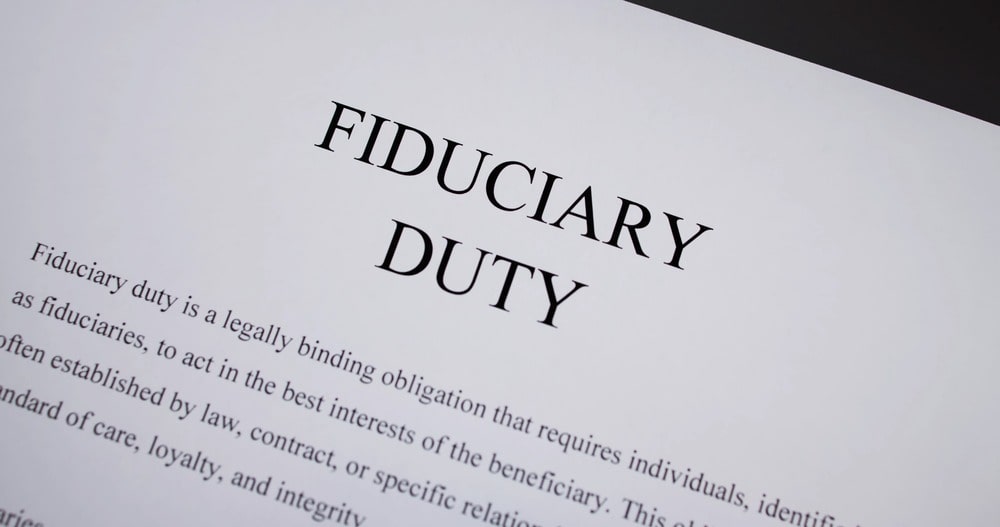Common Law vs Traditional Marriage in Texas: Key Differences

Common Law vs Traditional Marriage in Texas Explained
Key Highlights
- Texas law recognizes two types of marriage: traditional (ceremonial) and common law (informal).
- Traditional marriages require a formal ceremony and a marriage license from the state.
- Common law marriage in Texas doesn’t require a ceremony but has three specific legal requirements you must meet simultaneously.
- Despite their different formations, both marriage types grant the same legal rights and responsibilities.
- Ending a common law marriage requires a formal divorce, just like traditional marriages.
- Understanding family law is crucial to protect your rights in either type of marital relationship.
Introduction
Are you planning to get married in the Lone Star State? In Texas, saying “I do” can happen in more than one way. While many couples opt for a traditional wedding with a marriage license and ceremony, Texas law also recognizes informal, or common law, marriages. Both paths lead to a legally binding union with full rights and responsibilities. This guide will walk you through the differences, requirements, and implications of both types of marriage under Texas family law, helping you understand your legal standing.
Understanding Marriage in Texas: Common Law vs Traditional
When it comes to legal recognition of a marital relationship, Texas offers two distinct paths. Traditional marriages are what most people picture: a formal ceremony authorized by a marriage license. This ceremonial route is straightforward and leaves no doubt about your marital status.
On the other hand, a common law marriage is created informally through the actions and intent of the couple, without a ceremony or license. While less formal, state law provides it with the same legal weight as a traditional union. Understanding the nuances of each is essential for navigating Texas family law.
Key Definitions and Legal Recognition
A traditional, or ceremonial, marriage is formed by obtaining a marriage license and having a ceremony conducted by an authorized individual. This creates a clear public and legal record of your union from a specific date.
In contrast, a common law marriage, also known as an informal marriage, is a legally recognized marriage established without a formal ceremony. According to the Texas State Law Library, couples can form a legal marriage through their actions and agreement. This type of marriage is not automatic and requires specific criteria to be met to validate the marital status.
Once a common law marriage is established under Texas family law, it is just as valid as a ceremonial one. This means you have the exact same legal rights and responsibilities, including property rights, inheritance, and the need for a formal divorce to end the relationship. The state does not view one type of marriage as superior to the other.
Historical Evolution of Marriage Types in Texas
The concept of common law marriage has a long historical evolution, dating back centuries to a time when obtaining a formal marriage license or finding someone to perform a ceremonial marriage was difficult. This practice was carried over into early American legal traditions and became an accepted way for couples to form a legal union.
Texas law embraced this tradition, solidifying informal marriage in its statutes to accommodate the realities of life for its residents. While formal marriages have always been the more common and documented route, the state recognized that couples could and did commit to a life together without the official paperwork.
Over time, court decisions have further defined the requirements for a common law marriage, distinguishing it from simply living together. This evolution ensures that while the path to marriage is different from a ceremonial marriage, the commitment and legal standing are equally significant in the eyes of Texas law.
Requirements for Entering a Traditional Marriage in Texas
For couples choosing the path of traditional marriages in Texas, the process is clear-cut and governed by specific legal requirements. The cornerstone of a ceremonial marriage is obtaining a valid marriage license before the wedding. This official document is what grants you the legal permission to marry.
After securing the license, you must have a ceremonial marriage performed by an authorized person, such as a judge or religious leader. Following these steps ensures your marriage is officially recorded and recognized by the state. Below, we’ll cover the necessary documentation and eligibility rules.
Legal Steps and Documentation Needed
To get married traditionally in Texas, you must first apply for a marriage license. This involves visiting a county clerk’s office together. You will need to provide proof of identity and age, such as a driver’s license or birth certificate, and pay a fee.
Once the license is issued, there is a mandatory 72-hour waiting period before you can have your ceremony, though this can be waived for active-duty military members. The license is valid for 90 days. After your ceremony, the person who officiated must sign the license and return it to the county clerk. You will then receive an official marriage certificate.
The key legal documents and steps include:
- Proof of identity and age for both parties.
- Applying for and obtaining the marriage license from a Texas county clerk.
- Waiting the required 72-hour period.
- Having a ceremony performed by an authorized officiant.
- Filing the completed license to receive your official marriage certificate.
Who Can Marry: Age, Consent, and Eligibility
Texas has specific eligibility rules to ensure that both individuals can legally consent to marriage. The primary age requirement is that both parties must be at least 18 years old. This ensures that those entering into marriage are adults capable of making such a significant legal commitment.
Another critical requirement is that neither party can be currently married to someone else. Attempting to marry while already in an existing marriage, whether traditional or common law, is illegal and constitutes bigamy. Your previous marriage must be legally dissolved through divorce or annulment before you can remarry.
Finally, state law prohibits marriage between close relatives to prevent incest. Family law specifies the degrees of relation that are not permitted to marry. Meeting these age, consent, and eligibility requirements is mandatory for any legal marriage in Texas.
Requirements for Common Law Marriage in Texas
Establishing an informal marriage in Texas isn’t as simple as just living together. Texas family law sets out clear common law marriage requirements that you must meet. Many people mistakenly believe that cohabitation for a certain number of years automatically creates a marriage, but this is a myth.
To be considered legally married without a ceremony, you and your partner must satisfy three distinct legal elements at the same time. These elements all revolve around your intent and how you present your relationship to the public. Let’s look at exactly what those are.
The Three Legal Elements: Agreement, Cohabitation, and Representation
To have a valid common law marriage in Texas, you must satisfy all three of the following legal requirements simultaneously. Missing even one element means you do not have a legally recognized marital relationship.
First, you and your partner must have a mutual agreement to be married. This isn’t just an agreement to live together; it’s a present and immediate agreement of marriage where you both consider yourselves spouses. Second, you must live together in Texas as a married couple, also known as cohabitation. This means sharing a home and a domestic life.
Finally, you must represent yourselves to others as a married couple. This is often called “holding out” to the public. Your actions and words must show your community that you are in a committed marital relationship. According to Texas Family Code § 2.401, these three elements are essential:
- You agreed to be married.
- You lived together in Texas as spouses.
- You represented to others that you were married.
Registering a Declaration of Informal Marriage
While not a strict requirement for forming a common law marriage, couples can choose to make their union official by filing a Declaration of Informal Marriage. This is a formal document that provides clear, undeniable proof of your marriage and the date it began.
To register your marriage, you and your partner must go to the county clerk’s office together to sign the declaration. This form serves as prima facie evidence of your marriage, making it much easier to assert your legal rights for things like insurance, taxes, or inheritance without having to prove the three common law elements in court.
Filing this declaration is a straightforward way to avoid future disputes about your marital status. As outlined in the Texas Family Code, it is one of two ways to establish a common law marriage, offering a simple path to obtaining the same legal documents and recognition as a ceremonial marriage.
Proof and Evidence of Common Law Marriage
Proving the existence of a common law marriage can be challenging, especially if one partner disputes it during a separation or for inheritance purposes. Since there is no initial marriage certificate, the burden of proof falls on the person claiming the marriage exists.
To establish a valid common law marriage for legal purposes, you’ll need to provide evidence that shows all three legal elements were met. This evidence can come in many forms, from legal documents to testimony from friends and family who saw you as a married couple. The next sections will explore the types of proof that Texas courts find most persuasive.
Types of Acceptable Documentation
When a court needs to determine if a common law marriage existed, it looks for concrete documentation that demonstrates a marital relationship. Financial records are often the strongest form of evidence. Shared finances show that you and your partner were operating as a single economic unit, just as a traditionally married couple would.
Filing joint tax returns is particularly compelling, as you are declaring yourselves as married to the IRS under penalty of perjury. Other powerful legal documents include joint bank accounts, shared credit cards, and loan applications where you are listed as spouses. These records create a clear paper trail.
Here are some types of documentation that can help prove your marriage:
- Joint tax returns filed with a “married” status.
- Joint bank accounts or credit card statements.
- Mortgage or lease agreements in both names.
- Insurance policies listing each other as a spouse or beneficiary.
- Hospital or employment records naming one another as an emergency contact or spouse.
- Joint memberships or subscriptions.
Social, Financial, and Legal Indicators
Beyond formal documents, how you presented yourselves socially is a key indicator of your marital status. Did you introduce your partner as your “husband” or “wife”? Did you wear wedding rings on your ring fingers? Testimony from friends, family, and community members who can confirm that you held yourselves out as married can be very influential in court.
Evidence of shared financial support and the treatment of assets as marital property also strengthens your claim. This could include proof of joint purchases for a home, vehicles, or other major assets that would be considered community property in a traditional marriage. The court will examine the totality of your circumstances to determine your intent.
Ultimately, consistency is crucial. If you presented yourselves as married in some situations (like on a loan application) but not in others (like on tax returns), it can weaken your case. Your actions and how you portrayed your relationship to the world matter just as much as any single document.
Rights and Responsibilities: Comparing Common Law and Traditional Marriage
Are the rights different for a common law marriage? The short answer is no. Once a common law marriage is legally established in Texas, you gain the exact same legal rights and responsibilities as a couple who had a traditional wedding. Your marriage is just as valid in all family law matters.
This means everything from property rights regarding marital property to parental rights over children is identical. You are also responsible for debts accumulated during the marriage. Let’s explore some of these key areas to see how they apply equally to both marriage types.
Property Rights and Community Property
Texas is a community property state, and this law is a cornerstone of Texas family law. It dictates that most property acquired by either spouse during the marriage is considered marital property owned equally by both. This applies whether your marriage is common law or traditional.
The date your marriage legally began is critical for property division. For traditional marriages, it’s the wedding date. For common law marriages, it’s the date all three legal elements were first met. Any assets or debts from that point forward are subject to a “just and right” division if you divorce.
Understanding these property rights is essential, as they significantly impact your financial future.
| Aspect of Marriage | Traditional Marriage | Common Law Marriage |
|---|---|---|
| Legal Standing | Fully recognized with a marriage certificate as proof. | Fully recognized once the three legal elements are proven or a declaration is filed. |
| Property Rights | All property acquired during the marriage is community property. | All property acquired during the marriage is community property. |
| Inheritance | Spouses have full inheritance rights under state law. | Spouses have full inheritance rights under state law. |
| Divorce Process | Requires a formal divorce proceeding to dissolve. | Requires a formal divorce proceeding to dissolve. |
Inheritance, Health, and Parental Rights
Your legal rights as a spouse extend to some of the most critical parts of life, and this is true for both common law and traditional marriages. If your spouse passes away without a will, you have inheritance rights to their estate under Texas law. As a surviving spouse, you are legally protected.
You also have the right to make crucial medical decisions for your spouse if they become incapacitated and are unable to do so themselves. This includes rights to hospital visitation and access to medical records. These privileges are automatically granted to legally recognized spouses.
Furthermore, if you have children during your marriage, both partners are recognized as legal parents with equal parental rights. This impacts matters of child custody and support. A common law marriage automatically establishes both parents’ rights, providing important legal protection and stability for your children.
Dissolving the Relationship: Divorce and Separation
Just because your marriage was formed informally doesn’t mean you can end it informally. There is no such thing as a “common law divorce” in Texas. Once your marriage is legally established, you are married in the eyes of the law until a court says otherwise.
This means you must go through formal divorce proceedings to legally dissolve the relationship, just like a traditionally married couple. Simply separating or moving out is not enough. Seeking legal advice from a family law attorney is crucial to navigate the divorce process correctly.
Divorce Process for Common Law Couples
The divorce process for a common law couple starts with filing a standard divorce suit. However, there’s often a preliminary step: proving that a marriage existed in the first place. If your partner denies that you were ever married, you must first convince the court of the existence of a common law marriage.
This is where all your evidence—financial records, social proof, and testimony—becomes vital. A family law attorney can help you gather and present this evidence effectively. If the court agrees that a marriage existed, the legal proceedings will continue like any other divorce. You must file your claim within two years of separating, or the law presumes no marriage existed.
Once the marriage is validated, the divorce process follows the same timeline as a traditional divorce, including a minimum 60-day waiting period. The court will then address issues like property division and support.
Division of Assets, Spousal Support, and Child-Related Issues
When a common law marriage is dissolved, the court addresses the same issues as in a traditional divorce. A primary concern is the division of community property. All assets and debts acquired from the date the marriage began until the divorce must be divided in a way the court deems “just and right.”
Spousal support, or maintenance, may also be awarded. A common law spouse can request financial support based on factors like the length of the marriage, each person’s earning capacity, and financial need. The court applies the same legal standards regardless of the type of marriage.
For couples with children, the court will establish orders for custody, visitation, and child support to ensure the children’s needs are met. Key issues to be resolved include:
- Fair property division of the community estate.
- Determining eligibility for spousal support.
- Creating a child custody and visitation plan.
- Calculating child support obligations.
Common Misconceptions About Common Law and Traditional Marriage
Misinformation about common law marriage laws is widespread and can lead to serious legal confusion. One of the most persistent myths is the “seven-year rule,” the false belief that living with someone for a certain number of years automatically makes you married.
These myths vs facts misunderstandings can have significant consequences, especially when a relationship ends or a partner passes away. Clearing up these misconceptions is vital for anyone in a long-term cohabiting relationship in Texas to understand their true legal status and rights.
Myths vs Facts: Seven-Year Rule and Other Beliefs
Let’s set the record straight: there is no “seven-year rule” or any other time requirement for establishing a common law marriage in Texas. The duration of your cohabitation is not a determining factor. You could live together for 20 years and not be married, or you could meet the three legal criteria in a matter of months.
The focus of Texas family law is on your intent and actions, not the clock. Believing that time alone creates a marriage is a dangerous myth that could leave you without legal protections you thought you had. The state law is clear that all three elements—agreement, cohabitation, and representation—must be present.
Here are some key myths vs facts:
- Myth: Living together for a certain number of years creates a common law marriage.
- Fact: There is no time requirement. The three legal elements are what matter.
- Myth: A common law marriage is less “real” than a traditional one.
- Fact: Both have identical legal standing and rights in Texas.
- Myth: You can have a “common law divorce” by just moving out.
- Fact: All legal marriages require a formal divorce through the court system.
State Recognition and Out-of-State Implications
A common law marriage validly established in Texas is legally recognized as a marriage for all purposes within the state. This state recognition means your marital status is secure for taxes, property ownership, healthcare, and all other legal matters, granting you the same rights as any other married couple.
But what about out-of-state implications? Thanks to the “Full Faith and Credit Clause” of the U.S. Constitution, a marriage that is valid in one state is generally recognized as valid in all other states. This means if you move from Texas to a state that does not permit the formation of common law marriages, your existing Texas marriage should still be legally honored.
This protection is crucial for ensuring your marital status remains consistent as you move across the country. However, proving your Texas common law marriage in another state can sometimes be complex, which is another reason why filing a Declaration of Informal Marriage can be so beneficial.
Conclusion
In summary, understanding the differences between common law and traditional marriage in Texas is essential for anyone navigating these legal waters. Both types of marriage come with unique requirements, rights, and responsibilities that can significantly impact your life and relationships. From documentation needs to misconceptions surrounding these marriage forms, being informed can help you make the right choices. Whether you are considering entering into a common law marriage or a traditional marriage, it’s vital to be aware of your legal standing and implications. If you’re looking for personalized advice or clarification on your situation, don’t hesitate to get a free consultation with our experts today!
Frequently Asked Questions
Is there a time requirement to qualify for common law marriage in Texas?
No, Texas law has no specific time requirement for a common law marriage. The popular “seven-year rule” is a myth. Your marriage is based on meeting the three legal elements—agreement, cohabitation, and representation—simultaneously, not on how long you’ve lived together. A family law attorney can clarify your status.
Do common law spouses need to register their relationship with the state?
It is not mandatory for common law spouses to register their marriage. However, filing a Declaration of Informal Marriage with the county clerk is highly recommended. This document provides official proof of your marriage, simplifying legal recognition for things like taxes, benefits, and inheritance without needing to prove the marriage in court.
How do inheritance rights differ between common law and traditional marriage in Texas?
There is no difference in inheritance rights. Once a legal marriage is established—whether common law or traditional—both spouses have identical rights under the Texas Family Code. A surviving common law spouse is entitled to inherit marital property just as a traditionally married spouse would.
Related Posts
How Much Does Estate Planning Cost in Texas?
When considering your family’s future, one of the most common questions is: How much does estate planning cost? In Texas, a basic estate plan usually costs a couple of thousand dollars, while more complex plans can exceed $5,000, depending on your goals and how much…
How Much Does a Will Cost in Texas?
Many Texans worry about the expense of creating estate planning documents. One of the most frequent questions we hear is, How much does a will cost in Texas? The amount varies across the state, but the average basic will-based estate plan costs between $1,500 -…
How to Contest a Will in Texas
Challenging a will in Texas means filing a legal claim that questions whether the will is valid and enforceable. A person may file a challenge if they believe the will does not reflect the deceased’s true wishes, or if its creation was under questionable circumstances,…
7 Ways to Find the Best Civil Litigation Attorney Near Me
Litigation involves a lot: complex procedures, emotional challenges, days of evidence review, and lengthy discussions. Hiring a strong litigation attorney can ease the intimidation a legal dispute may bring. But, how do I find the best civil litigation attorney near me? You may not know…
What Is Fiduciary Litigation in Texas?
When someone manages property, money, or other assets for another, the law requires them to act in that person’s best interests. A fiduciary has a legal responsibility to do what’s right. But sometimes they fall short in fulfilling their duties, and litigation is necessary to…
Incapacity Planning: Essential Benefits of Trusts
The Benefits of Incapacity Planning with a Trust Key Highlights An incapacity plan is a critical part of your estate planning that often gets overlooked. Using a trust allows a successor trustee to manage your trust assets seamlessly if you become unable to do…
Whether you need a personalized estate plan or help handling a civil dispute, we're here to help
Take the first step toward protecting your legacy and giving your family lasting peace of mind. Whether you need a personalized estate plan or help handling a civil dispute, we're here to help.







